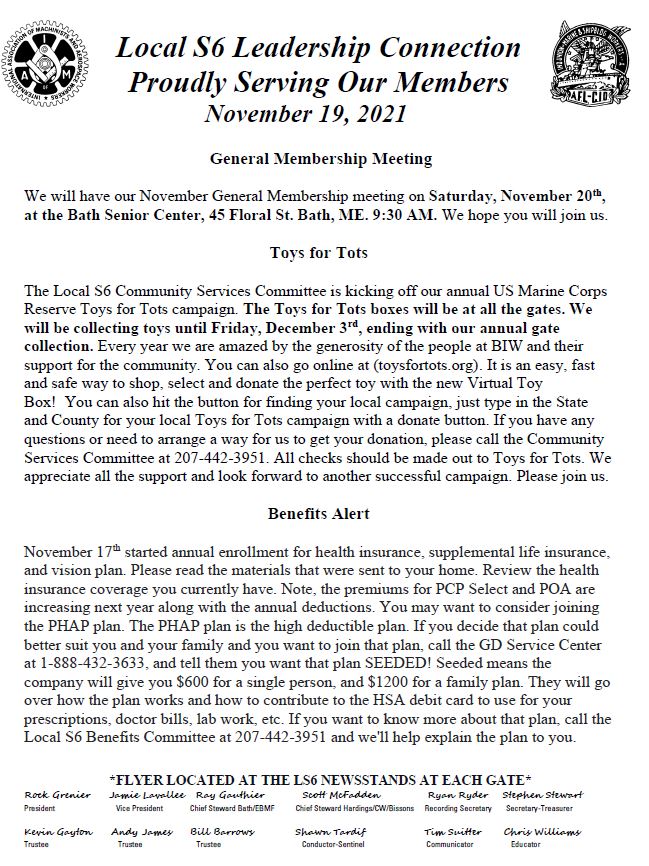New Steward Posting: 11/12/21
STEWARD OPENING
(1) 1st SHIFT BATH/EBMF MAINTENANCE
Shop Steward nominations for the above classification(s), shift, and facility are now open. Petitions may be picked up beginning on Monday, November 15, 2021, at the Local S6 Union Hall.
You must be a member in good standing for one (1) year to run for Shop Steward and the petition must be signed by ten percent (10%) of the members in the classification(s) affected.
All petitions must be returned to the Recording Secretary (Ryan Ryder) no later than 4:00 p.m., Monday, November 29, 2021.

